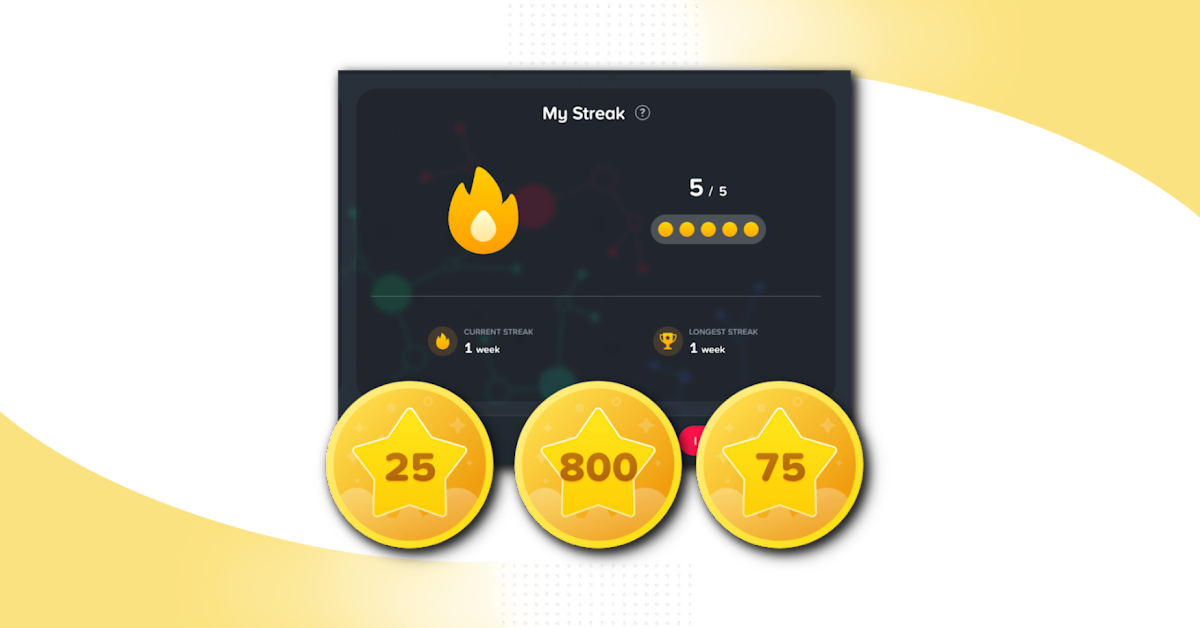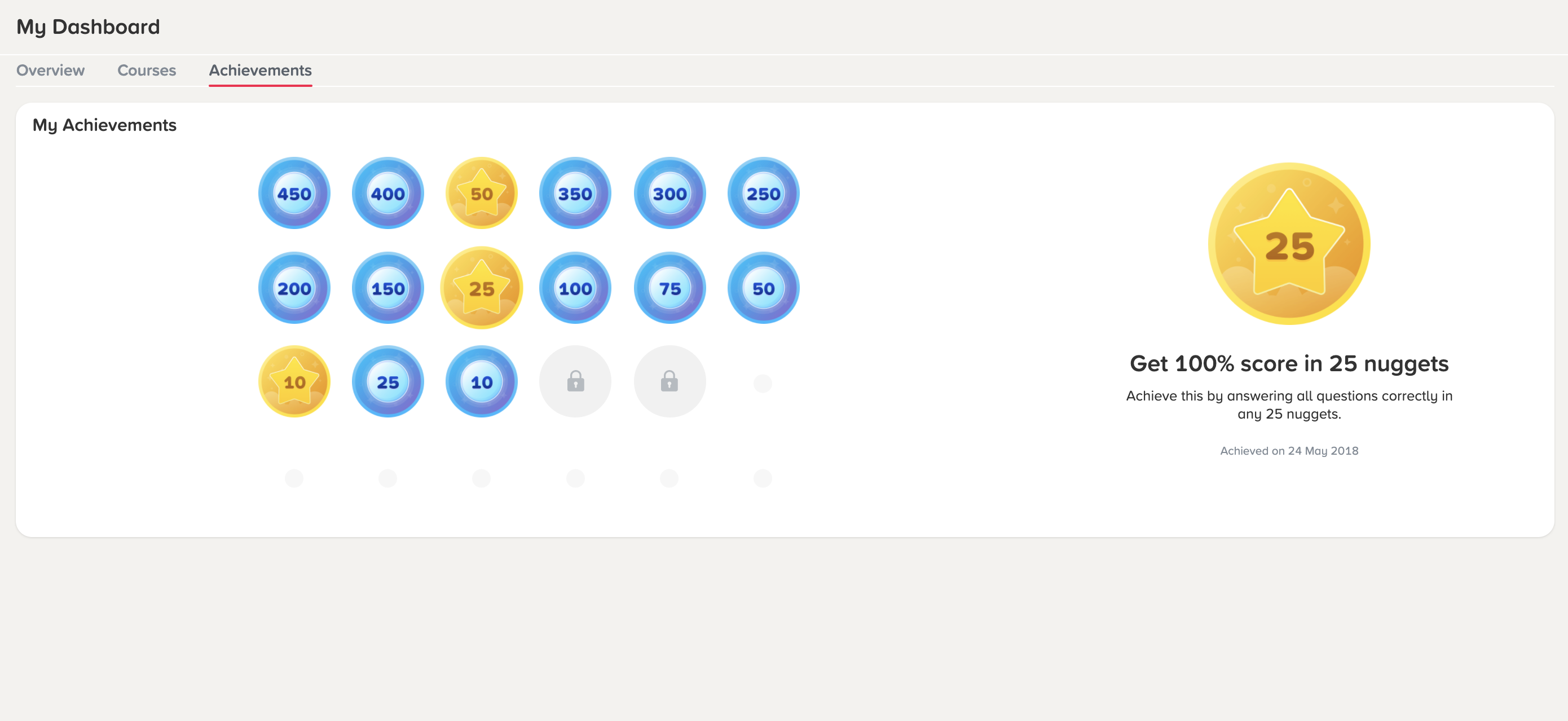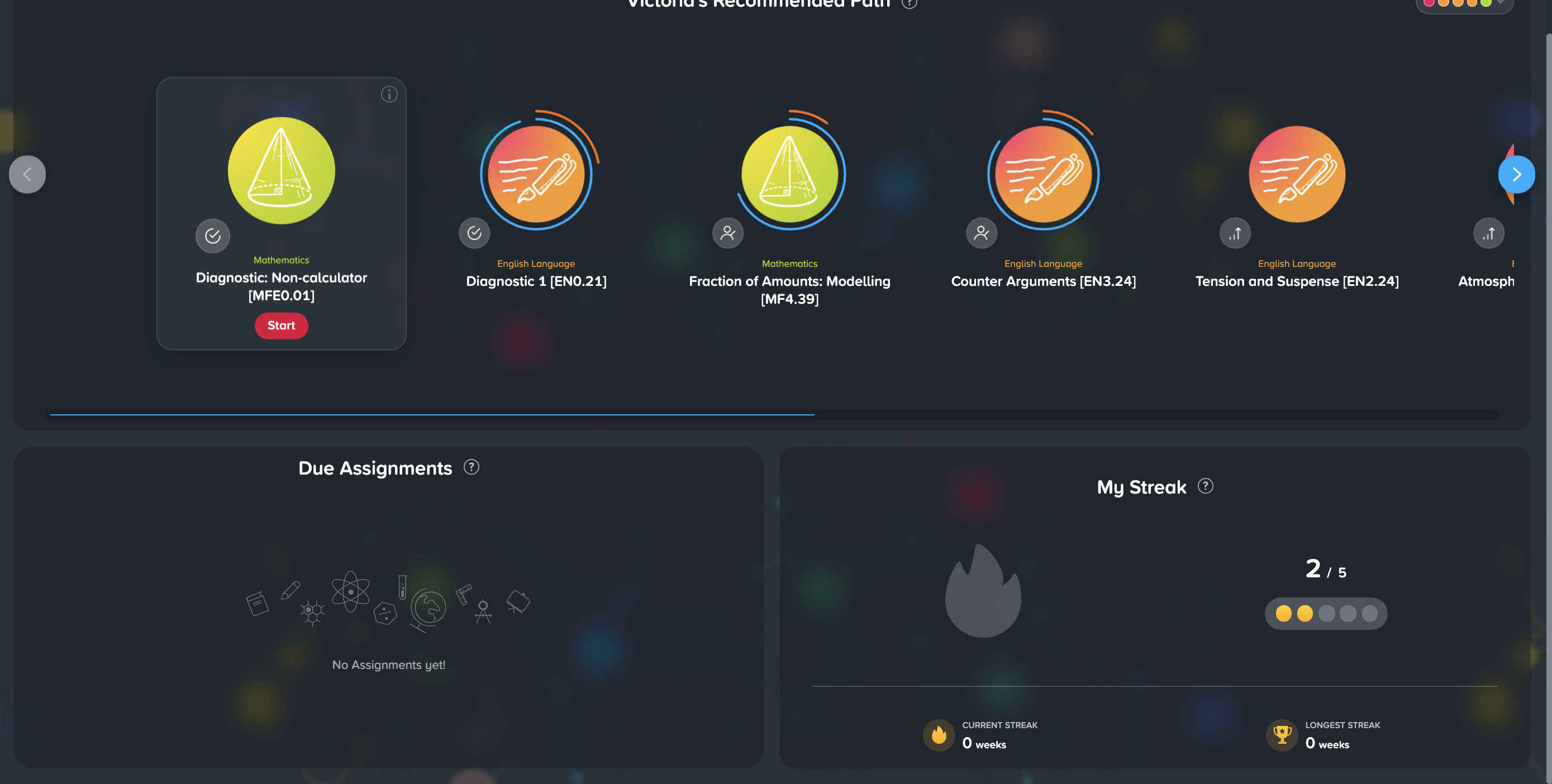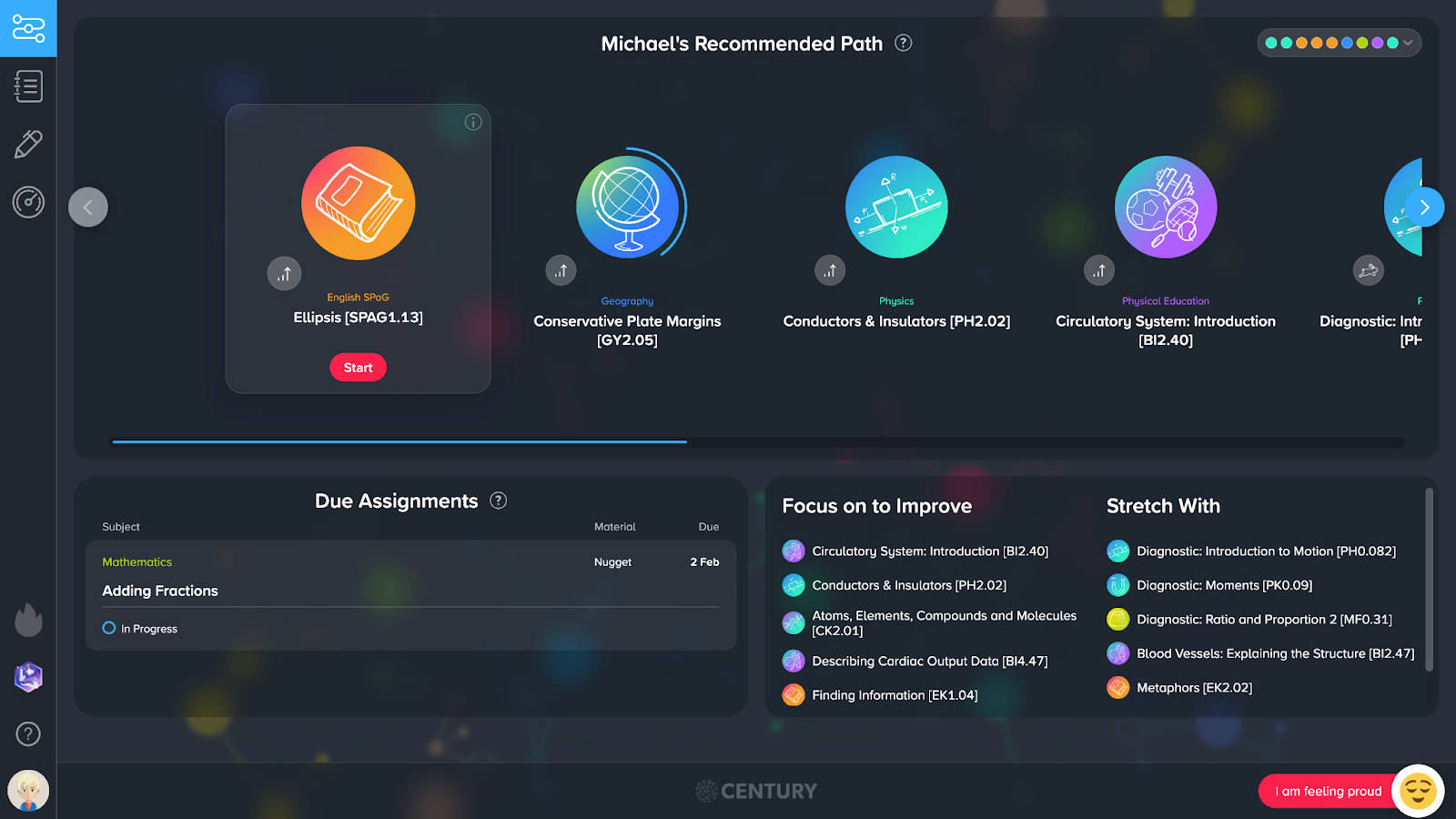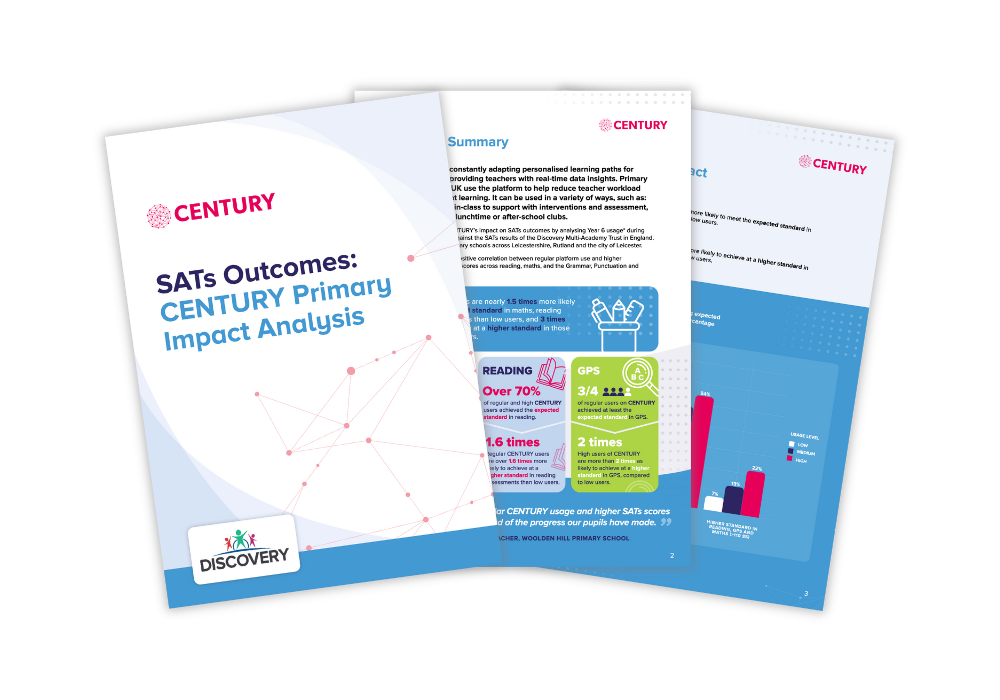Estimated reading time: 6 minutes
At CENTURY, we have been working to find ways to acknowledge and reward learners’ achievements. To help us fulfil this aim, we have recently implemented two new features – badges and streaks. In this blog post, our Head of Product and Cognitive Neuroscience Alice Little explains why we chose to add these features and how they work on the platform.
Gameful elements can help to provide a more positive user experience by rewarding and promoting good habits, as well as providing evidence of an achievement or ability – but only if they are structured in such a way that they link to the activity being rewarded, act as a source of information about the users’ performance, and are achievable and low-stakes.
In this blog post, I will break down how our badges and streaks systems work and explain the pedagogical and psychological principles behind them.
So what exactly are badges and streaks?
There are currently two types of badge available to learners on CENTURY, and they can be earned in various ways. For example, a learner could receive a badge for receiving 100% in a nugget, or for studying 10 new nuggets.
In general terms, a streak is the continued practice of a specific task either over a predetermined period of time – for example, go on a run once a day – or by simply repeating the requirements of the task whenever the task takes place e.g. run at least 2km each time you run.
On CENTURY, a streak is when a student has completed at least 5 nuggets within one week. We decided on a weekly streak to allow students and teachers to spread learning throughout the week as they choose.
Learners are able to see this underneath their recommended pathway. As you can see in the image below, the learner can see how many dots are filled in, and the ‘2/5’ indicates how close or far away they are from achieving a streak.
Once they have completed a streak, the flame appears. Learners are also able to see for how many weeks in a row they have managed to complete a streak and what their longest streak has been, encouraging them to get into the habit of consistently completing at least five nuggets on the platform every week.
How did we plan and create the features?
We were fortunate enough to have the right mix of people to work on these features. As well as having many colleagues who previously worked as teachers and senior leaders, we have several engineers, including our Chief Technology Officer, who have backgrounds in gaming and were able to ensure that the mechanical implementation met best gaming practice.
We decided to implement achievements in response to asking ourselves how we could better engage learners and help them to understand their own learning, so from the start, it was established that any gamified features had to be created and implemented in line with pedagogical research. This approach ensured that pedagogy and positive psychology was at the heart of the design of the features from the get go.
Implementing the research behind effective gamification
The aim of these new features is not to create a sense of there being a ‘winner’ and a ‘loser’, but rather to motivate every learner regardless of their ability level. This is why while some achievements reward proficiency, others reward effort and coverage.
We also wanted to build a safe environment for failure. If you were to ‘fail’ a level in a video game, you’d just start it again, having learnt something about how to pass it. You’d keep repeating the level until you worked out how to pass. In a similar vein, with CENTURY achievements, you don't have to get 100% the first time you attempt a nugget to achieve the 100% badge or for it to count towards your streak.
Best practice, and what we have done, is to consider all users, regardless of how long they have been on the platform. We wanted to create a system that is as engaging for students who have been using CENTURY for years as new learners.
This is particularly important given the criticism that gamification in education has rightly received in the past for only providing an external motivator, for example a prize or a reward, for completing something. If not carefully implemented, external motivators can damage intrinsic motivation over time, leaving the learner with less drive to do the task if the reward is taken away. The same underlying psychological and neurological mechanisms are in play as with addiction, and over time, the value of a reward needs to become greater to maintain the same effect on the user.
For this reason, we have been careful to structure achievements in a way that increases overall motivation for learning for all students – including long-time users. For example, students are able to achieve their first badge within five nuggets regardless of their score, whereas it becomes a little more difficult to earn badges as learners work through the platform. Similarly, streaks intentionally promote a little-and-often approach to learning, rather than encouraging short bursts of intense activity which are unsustainable over a long duration.
Book a demo to find out more about how CENTURY can help to enhance the teaching and learning at your school or college.
